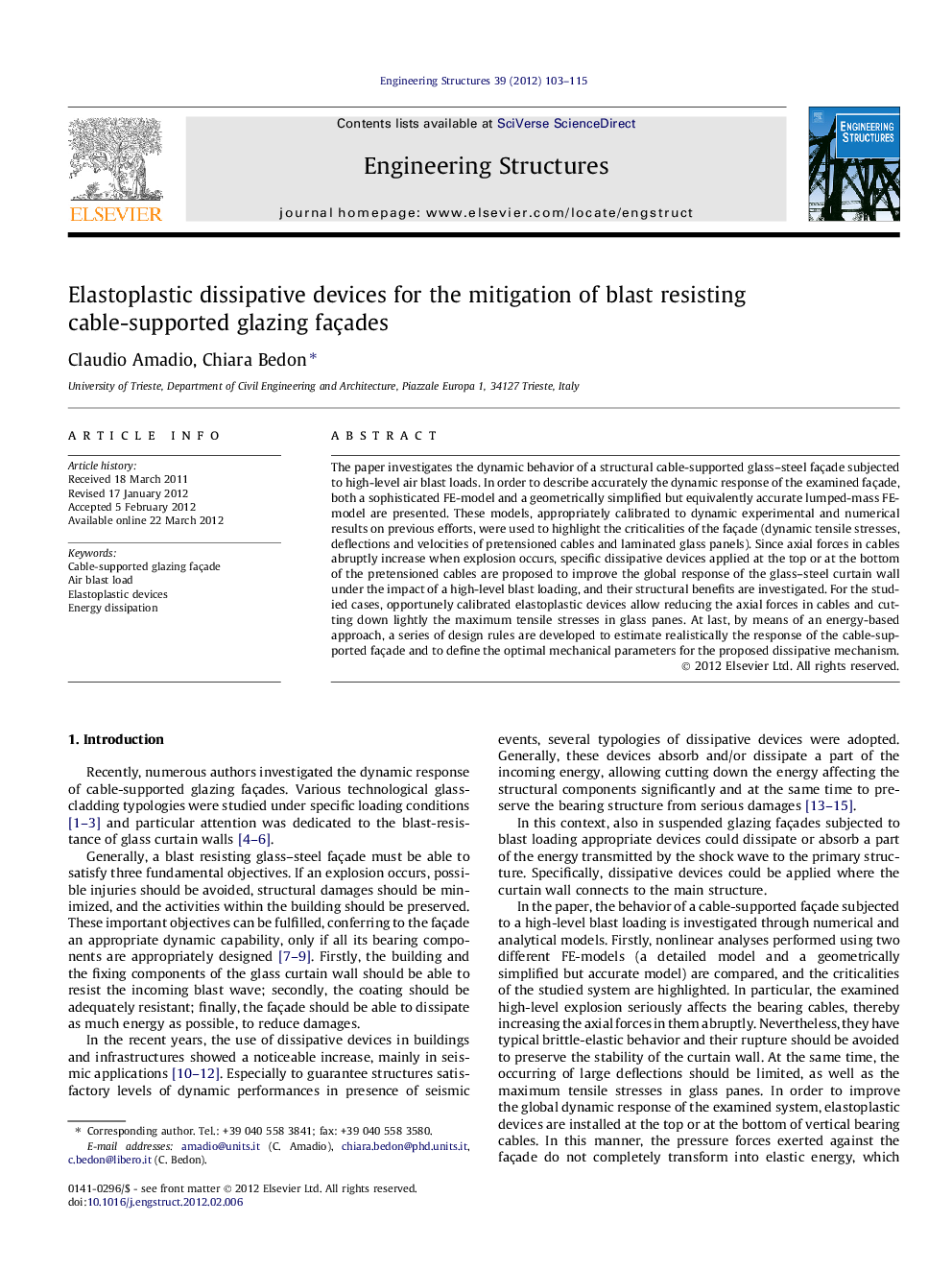| Article ID | Journal | Published Year | Pages | File Type |
|---|---|---|---|---|
| 267532 | Engineering Structures | 2012 | 13 Pages |
The paper investigates the dynamic behavior of a structural cable-supported glass–steel façade subjected to high-level air blast loads. In order to describe accurately the dynamic response of the examined façade, both a sophisticated FE-model and a geometrically simplified but equivalently accurate lumped-mass FE-model are presented. These models, appropriately calibrated to dynamic experimental and numerical results on previous efforts, were used to highlight the criticalities of the façade (dynamic tensile stresses, deflections and velocities of pretensioned cables and laminated glass panels). Since axial forces in cables abruptly increase when explosion occurs, specific dissipative devices applied at the top or at the bottom of the pretensioned cables are proposed to improve the global response of the glass–steel curtain wall under the impact of a high-level blast loading, and their structural benefits are investigated. For the studied cases, opportunely calibrated elastoplastic devices allow reducing the axial forces in cables and cutting down lightly the maximum tensile stresses in glass panes. At last, by means of an energy-based approach, a series of design rules are developed to estimate realistically the response of the cable-supported façade and to define the optimal mechanical parameters for the proposed dissipative mechanism.
► Dynamic behavior of cable-supported glazing façade subjected to blast loads. ► Accurate numerical FE model and simplified lumped-mass FE model are realized. ► Benefits provided by elastoplastic devices at the top of the pretensioned cables. ► Dissipative devices strongly cut down tensile stresses in cables and glass. ► Design rules for appropriate calibration of the dissipative devices.
